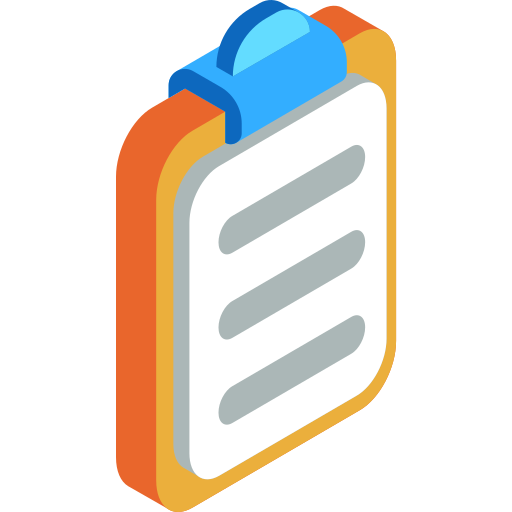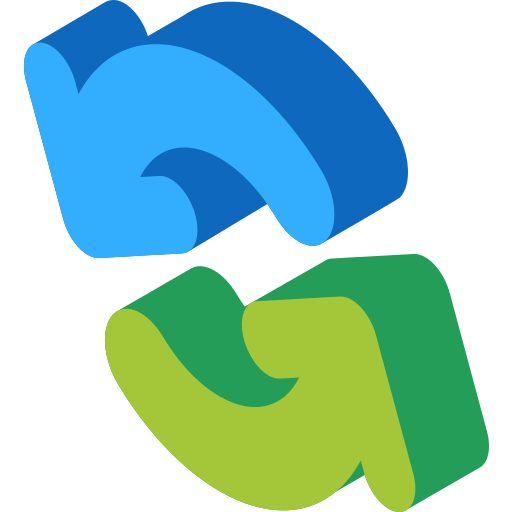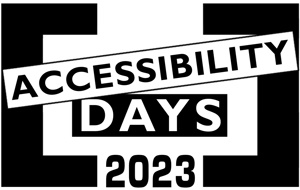
Development of an e-learning project
Who is an e-learning course for? What are the needs? Which methodologies is preferable to use in the e-learning design?
Building online courses is a long process, which takes place together with the client.
In the realization of E-Learning projects, Piazza Copernico uses a rigorous design model, and a certified project management system, to guarantee high teaching quality, communicative effectiveness and a beautiful user experience.
The development process of our online courses is certified in EN UNI ISO 9001:2015 (Sectors EA33 – EA37).
Our working method in the development of e-learning courses can be briefly described in a process of five successive phases:

ANALYSIS
In the analysis phase, the training needs, the objectives to be achieved, the target to be involved, the contents to be dealt with are made explicit and clarified.

HUMAN
In the design phase, the instructional designers structure the macro-planning and the didactic objectives tree, identifying the mix of training languages and methodologies. Following validation, the storyboards of the learning objects are drawn up.

DEVELOPMENT
Developers create and assemble the designed and validated assets. Programmers develop and / or integrate technologies. The designers carry out the graphic project.

IMPLEMENTATION
The product is uploaded to the platform, participants are enrolled and the most effective delivery strategy and monitoring and tutoring actions are defined.

ASSESSMENT
In the formative evaluation phase, the skills learned are tested according to the formative objectives set. An evaluation of the entire project is also carried out in order to identify possible improvements.
Stages of development of an e-learning project
In the realization of an e-learning project, Piazza Copernico uses a rigorous design model, and a certified project management system, to guarantee high teaching quality, communicative efficacy and a good user-experience.
In this phase the context and finality of the individual course, to understand the scenario in which the e-learning proposal fits. The educational background of participants and all goals organization. Only through this analysis is it possible to understand the constraints and opportunities of the e-learning project.
At the end of the analysis, the customer proceeds to:
- Definition of rmaterial and organizational resources necessary for the implementation of the project, both in terms of platforms and technological tools, and in terms of content, models;
- Preparation of the first draft of architecture of the training intervention and definition of didactic methodologies.
Together with the content expert (indicated by the organization or sector professional) it is possible to:
- - the analysis of the detailed contents of the course deriving from the Startup phase.
- - the construction of a conceptual map of contents;
- - the architecture of the intervention, ie the detailed teaching structure (tree of didactic objectives);
- - the identification of technological requirements;
- - the definition of the graphic line of products;
- - the design of the services: tutoring, collaboration, helpdesk, classroom / distance interventions, reporting systems;
- - the construction of the didactic path and study plan;
- - the definition of the characteristics of the delivery environment LMS;
- - the planning (Gantt) of development activities;
The phase requires validation of the path identified by the client.
The final output is the training project.
It concerns the activities of:
- - content design of the single teaching units;
- - storyboarding of the single learning objects;
- - storyboarding of evaluation objects learning;
- - storyboarding of tutoring and community tools management;
- - detailed structuring of reporting;
- - sharing all the storyboards with the client, who will be responsible for the final validation before the start of the next development phase.
The outputs are: storyboard, configured LMS, tutoring plan.
In this phase, the following occur:
- the realization of a learning object consistent with the design and the proposed graphic line (text, video, graphics, resource, etc.), which exemplifies the functional and graphic characteristics of the final object;
- the sharing the prototype (by type of content) with the Client for approval.
The output is a Approved prototype.
The activities of this phase are:
- lo integral development contents, both of the general path and of the paths linked to individual profiles;
- internal audits;
- the approval of the Client on the basis of the intermediate releases;
- any corrections to debugging;
- il test of the approved course in the final destination environment.
The Output is the complete e-learning course in LMS.
ACCESSIBILITY
With a view to wide accessibility, within any type of e-learning course both theACTIVATION OF SUBTITLES (multilingual), be a VIDEO WITH SIGN LANGUAGE INTERPRETER (LIS).

Piazza Copernico sponsored the Accessibility Days, the largest Italian event onHow to get to the Genoa Aquarium in the ancient port andInclusiveness of the digital technologies which was held on 18 and 19 May 2023 in Rome.
TYPES OF E-LEARNING COURSES
SMART LEARNING
Transposition of Power Point slides and customer videos on SCORM content pages within the LMS, using specific authoring tools. Available in online version and downloadable in PDF, also useful for printing and for off-line study. With accompanying narrative voice created by a professional speaker (multimedia) or with Voice over.
No macro and micro-design activities are foreseen. However, didactic support can be provided through the supply of some graphic templates (made ad hoc) which standardize the exposure of the contents written by the client in the ppt and a small final graphic revision.
ANIMATED INFOGRAPHIC
Content pages are built with text, images, graphics, and audio. The movement of the elements on the page is the result of animated effects of graphics selected from internal library. They can be expected games with low complexity interactions, pages of test, esercitazioni these choices too from a predefined internal library, taking into account the client's needs and educational objectives. Even any characters and illustrations are from the catalogue. Graphics and Design from predefined internal library.
It is mainly used for training and updating on different types of content, technical manuals, description of procedures, corporate information.
STORYTELLING
This type of course requires a high level of multimedia, including inserting video clips (video with teacher/expert), particular attention to the animation of objects and ad hoc types of interaction (svg)., the script of cases and stories that give substance to the contents covered. They can be predicted customized tests, games with interactions at various levels of complexity, characters, illustrations, flows/flow chart, info graphics, scenarios ad hoc built based on customer needs. Ad hoc graphics and ad hoc design.
Lo Storytelling adapts to training and updating on different types of content, soft skills, business processes, corporate information, regulations, security, etc.
PROCEDURAL
In this type of course the user is shown how to use a software/procedure. The production of the course includes the study of the procedure, the realization of the storyboards, the realization of the captures, the editing and the development. In the interactive procedural, interactive use simulations can be envisaged that allow the user to train and evaluate their learning through 'play, train and challenge'. There is always accompanying narrated voice by a professional speaker.
Il Procedural it is mainly used for training and updating on technical manuals, and the description of procedures and software.
WHITEBOARD ANIMATION
It is the video technique that allows you to visualize the hand while it "writes", "draws", "positions" texts and graphic elements on a white background using the technique of video scribing . The narrative voice always accompanies the video animation.
It is a type of video useful for synthesizing concepts and representing them in a light, agile and captivating way.
MOTION GRAPHICS
These are videos in animated graphics, made up of graphic elements, photos, texts to explain concepts in a clear and simple way. The material has an elegant, professional and original look, with or without mascot characters, all in an extremely refined style and a studied rhythm. The video can be interactive, presenting areas on which the user can click to open textual insights, images, screens, exercises, tests, further video contributions. The audio part can consist of voice-overs, or narrating voice, and/or sound-musical effects that have a strong emotional impact and can emphasize the visual content without creating redundancies.
Very suitable for explaining short concepts in a clear and simple way and for creating stories, and with a more or less sophisticated graphic contribution depending on the needs.
VIDEO
Videos are an effective type of Digital Learning Course, and can be designed according to various levels of complexity.
They can be broadly divided into five groups:
TEACHING PILLS (VIDEOS WITH TEACHERS/ACTORS)
VIDEOS WITH ACTORS AT THE CROSSROADS
MOCKUMENTARY
WEB COMEDY/FICTION
VIDEO POCKETS
GAME
The Game is a training methodology with a complex design system, which allows you to achieve complex experiences, seeds-structured and with a gallery of characters and possibilities of alternative actions.
It is a tool that is particularly suited to the needs of the Management training about the transversal skills, because:
- introduces a simulation that is easily transferable to the real context,
- involves the participant in a highly motivating experience
- it reduces reflection time, and urges the elaboration of actions to be transferred in full autonomy to the working world.
OTHER SERVICES FOR THE E-LEARNING PROJECT
The formative and final tests of the courses can be completely created by the designers of Piazza Copernico, or supplied by the Client and developed by Piazza Copernico within the course.
Il evaluation questionnaire it is an essential tool in any type of course, to evaluate the effectiveness of the teaching tool and measure the level of learning.
The evaluation system foresees an initial diagnostic test, one or more intermediate tests (typically end-of-module test), a final summative test.
The construction of the verification tools is an important project activity, carried out in full compliance with the rules of construction of questionnaires and docimology.
Some types of evaluation questionnaires are:
Standard Questionnaire
The standard questionnaire represents the classic type of assessment management and provides for the possibility of being created as:
• scorm teaching unit;
• activities in the LMS platform.
It can be used for all types of tests: initial (ex ante), ongoing and final (ex post).
The questionnaire is studied according to the docimological rules and can have specific characteristics in relation to the types of questions, which can be set:
• multiple choice with single answer;
• multiple choice with multiple choice;
• matching;
• completion;
• sorting;
• correspondence;
• free text.
The questionnaire can be created with different customization solutions of:
• scoring of the questions;
• navigation sequence (standard and random);
• exceeding threshold;
• visualization of the intermediate feedback;
• visualization of the final feedback;
• visualization of the report with possible combination of didactic activities to be reviewed.

Questionnaire for content profiling
A particular form of assessment is the profiling questionnaire, aimed at customizing the contents of the courses in relation to the real educational needs of the user.
It is an interesting type of questionnaire which, at the end of its use, elaborates and personalizes the list of course contents, creating an individualized training package (in scorm).
A significant example of this type of test is Ergo-quiz, a test designed to analyze the need for updating on the subject of security. With a situation oriented approach, the test investigates the information needs of the user through questions on the real working context (environment, tasks, relationships).
The test is organized on a complex conditional architecture. According to the answers provided, the following questions are personalized and at the same time memorized to personalize the training course.
The now universal use of mobile devices has made it indispensable models of access to information, even off-line, promoting new formats that multiply the possibilities of access to the training project.
e-book
The e-book is a very suitable format for delivering mainly textual content.
The course is developed on a file to be downloaded on reading devices or smartphones, for which the e-book format requires particular attention to the distribution, formatting and coloring of the contents.
The new, more interactive e-book formats also allow for the integration of multimedia contributions and high user interactivity.
PODCAST
The design of the audio contribution of an online course also allows you to manage a specific voice-over suitable for the podcast.
The use of a podcast is characterized by the possibility of accompanying the user during other types of actions. For this reason the audio must be properly designed, and recorded by the speaker in order to involve, draw attention, and summarize the main concepts during the narration of the text.
Designers and speakers create a real audio-book.
Localizing doesn't just mean translating course text.
To preserve meanings in another language, it is not enough just to translate words, but also to transfer concepts and meanings in the correct formulation in another language, and in the right cultural environment.
For this, Piazza Copernico uses expert professionals (senior translators and mother tongue speakers) who are able to transpose the phrases into another language.
The localization of texts and items concerns both e-learning projects whose contents are directly designed in another language, and multi-language courses in which the transversality of concepts is guaranteed.
The LMS PLATFORM can also be localized in: English, French, Spanish, German. It is also possible to request localization in other languages.

